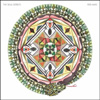- Administrator
- Albums and Singles
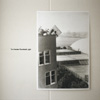 Tim Hecker has made a career out of releasing reliably excellent albums, but aside from rare departures like 2002's Van Halen-inspired My Love is Rotten to the Core, he has always stuck very closely to the hissing, crackling melancholy that he is known for. Ravedeath, 1972 certainly contains more of that (which I am perfectly happy with), but finds Hecker edging out of his comfort zone a little more than I would expect.  The raw material for this album originates from "live" recordings made with a pipe organ at a Reykjavik church, and that organ often emerges from Hecker's digital fog in surprisingly pure form.
Tim Hecker has made a career out of releasing reliably excellent albums, but aside from rare departures like 2002's Van Halen-inspired My Love is Rotten to the Core, he has always stuck very closely to the hissing, crackling melancholy that he is known for. Ravedeath, 1972 certainly contains more of that (which I am perfectly happy with), but finds Hecker edging out of his comfort zone a little more than I would expect.  The raw material for this album originates from "live" recordings made with a pipe organ at a Reykjavik church, and that organ often emerges from Hecker's digital fog in surprisingly pure form.
Tim Hecker's albums always tend to ostensibly explore a complicated abstract theme, though the subtle differences between a Hecker album inspired by "spectral communications" and one inspired by "the cartography of dreams" is probably lost on all but the most devoted fans.  That is not a grievance, as I always enjoy finding out what was occurring in Tim's head during the conception of an album.  It's just that a Tim Hecker album always sounds exactly like Tim Hecker album, regardless of its conceptual underpinning.  In keeping with that tradition, the loose conceptual underpinnings of Ravedeath, 1972 revolve around "digital garbage," an idea that took root when Tim saw footage of a mountain of pirated CDs and DVDs being destroyed by bulldozers in Kazakhstan.  Characteristically, that fascination evolved and expanded into something far more abstract and ineffable by the time the album began to cohere.  To further confuse and fascinate me, the album is also teeming with enigmatic allusions, such as the unexplained titles like "Analog Paralysis, 1978" and "Studio Suicide, 1980," the dates of which are too far in the past to coincide to Hecker's own life.  Mysteries aside, it is clear that the tug of war between music and entropy (digital garbage) has always been a bit of an obsession with Hecker, as his whole aesthetic can succinctly be summed up as "warmth and beauty struggling to emerge from a fog of static."  The only change is that on Ravedeath, 1972, the more melodic parts are a bit more successful at fighting their way to the foreground.
Aside from the aforementioned pipe organ, Hecker also employs some synth and piano (some of which is contributed by engineer Ben Frost).  Oddly, Hecker makes no mention of using guitars, but the warped and woozy sounds in "Studio Suicide, 1980" sure sound like they come from one.  In general, the organ-based pieces tend to be droning, immersive, and almost sacred-sounding (like the beautiful "In the Fog II"), while the piano pieces tend to be more twinkling and delicate.  However, the album flows together quite seamlessly as a whole, held together by the languorously blissful tone and omnipresent hiss and shimmer.
It's a pretty confounding album to try to deconstruct, as the actual musical content of each individual piece is quite simple and minimal, yet sounds so vibrant and ingenious.  For example, the opening piece, "The Piano Drop," is built upon the same few synthesizer chords repeated over and over again, but they quiver, stutter, fade, and swell so much that they are transformed into something quite stunning.  Hecker is singularly adept at something quite intangible–it seems like the actual music that is played during the recording sessions is totally secondary to the eventual outcome, as he has an intuitive understanding of how to use the studio to wrestle pure sound into something with soul and emotional resonance.
It is fairly hopeless to try to contextualize Ravedeath, 1972 as a progression from Hecker's previous work, as he has been at the top of his game for quite some time and that has not changed–he has merely tweaked the formula a bit.  There are some elements here that are a bit more subtle than Tim has been in the past, as he seems to be able to gradually do more and more with less and less. There are also a couple of somewhat daring moments, where he dispenses with his cloak of white noise completely, such as on "No Drums" and "In the Air III."  Even in those cases, however, the music is either submerged-sounding or heavily reverbed.  Ravedeath isn’t an epiphany or a radical transformation; it is merely the work of a master who has found a few small new ways to challenge himself.  This album will deservedly be all over year-end "best of" lists, but anyone unfamiliar with Hecker's artistry could just easily start with Haunt Me, Haunt Me, Do It Again or Harmony In Ultraviolet– this is merely the latest in a long line of great albums.
Samples can be found here.
Read More
 Tim Hecker has made a career out of releasing reliably excellent albums, but aside from rare departures like 2002's Van Halen-inspired My Love is Rotten to the Core, he has always stuck very closely to the hissing, crackling melancholy that he is known for. Ravedeath, 1972 certainly contains more of that (which I am perfectly happy with), but finds Hecker edging out of his comfort zone a little more than I would expect.  The raw material for this album originates from "live" recordings made with a pipe organ at a Reykjavik church, and that organ often emerges from Hecker's digital fog in surprisingly pure form.
Tim Hecker has made a career out of releasing reliably excellent albums, but aside from rare departures like 2002's Van Halen-inspired My Love is Rotten to the Core, he has always stuck very closely to the hissing, crackling melancholy that he is known for. Ravedeath, 1972 certainly contains more of that (which I am perfectly happy with), but finds Hecker edging out of his comfort zone a little more than I would expect.  The raw material for this album originates from "live" recordings made with a pipe organ at a Reykjavik church, and that organ often emerges from Hecker's digital fog in surprisingly pure form.
- Administrator
- Albums and Singles
 Repress of 500 copies of the sold out LP as a picture disc w/ new artwork & design by Seldon Hunt. Totem 3 coming soon on Important.
Repress of 500 copies of the sold out LP as a picture disc w/ new artwork & design by Seldon Hunt. Totem 3 coming soon on Important.
Randall Dunn: analog synths, electronics, percussion, fog drone meditations, mellotrons, rag-dun tibetan trumpet, vocals, further schisms,
Don McGreevy: drums, percussion, bells, electric and acoustic guitar, feedbacker
Bill Horist: electric and acoustic guitar, prepared guitar, mellotron flutes,
electronic disturbances and fire purification
James Davis: pipe organ, harmonium, mellotron choir, electric bass, leprosy synth,acoustic guitar
B.R.A.D.: ancient vocal portal drones, deity vocal meditations, gongs and percussion,choir vocals
Dave Abramson: drums, percussion, tingsha, vajra bell,
Milky: slide guitars, electric fuzz guitars, acoustic slide guitar, vocals
LP is pressed in an edition of 1000. Cut at Chicago Mastering & pressed at RTI for the highest possible fidelity.
Release date: Feb 22, 2011
Echoing like a long lost Werner Herzog soundtrack Totem 2 is a record of subtle Meditations and Deep electric Hallucinations from the Crystal Caves of the Northwest to the orchestral desert portals of Turkey.
Totem two finds MMOB exploring the disappearance of the Mystic and the schisms of our age. Iin times when forces move against our souls these are the first sounds of music that can only be described as NO-AGE , a resistance is making itself known. Featuring members of EARTH, ASVA, BURING WITCH, THE DIMINISHED MEN, and more and special guests from Secret Chiefs 3 and the thriving Istanbul music scene.
MMOB has now solidified into a 7 piece cosmic psyche force. Like a reverse dark side of the New Age sound, on the Totem series Master Musicians of Bukkake perform ritualistic electric excursions into the outer and inner reaches. Relying more on the electric power of psyched guitars, analog synth chants, and exotic heavy percussion. This Totem Trilogy echos with the delusions of a west coast death cult. Outer spaced gamelan, dusty fuzz rock from celestial deserts, meditations of a deranged Krishna gathering, and the Blurry acoustic guitar majesty of The Cascade mountains all reveal themselves here in epic form. Master Musicians Of Bukkake’s newest offering in the Totem Trilogy, Totem Two marks yet another psychic and sonic shift from their first record “Visible Sign Of the Invisible order” (Abduction records 2005/LP via Important Records 2010) and it’s predecessor in the trilogy Totem One (Conspiracy records 2009). On Totem Two Master Musicians explores and meditates deep on the death of the Mystics, the Forgotten Ones, the Schisms of our time, and the inability to realize the primary clear light for what it is. Totem Two shifts from electronically altered Bön cult rituals to outer spaced Sufi Sects. Finally succumbing to the fully orchestrated No-age darkness of the religion of the future only to end in delusional “enlightenment” atop Mt. Shasta scrawling the deranged rambling of new age psychosis on the crystal walls of a cave. Every sound and note played put to tape by a group with a singular purging purpose.
Recorded Mixed and Produced by Randall Dunn (Six organs of Admitance, Sunno))), Earth ,etc), at Aleph studios in Seattle Wa.MMOB features members of EARTH , BURNING WITCH, DIMINISHED MEN , ASVA, and more. Perede Kaldirma was recorded in Istanbul,Turkey at the legendary ADA studios, November 2009. Featuring a collaboration between MMOB and Turkish musicians from the Istanbul music scene it features amazing Ney Solos by Serkan Bagkenesen. Over the years ADA studios in Istanbul has been the host for records by Erkin Koray and Baris Manco to name a few.
inspired by and for lovers of: Popul Vuh’s work with Werner Herzog, early Vangelis and Tangerine Dream and Philip Glass’s Kundun soundtrack.
TOUR DATES:
Mar 26 2010 8:00P
Kenyon Hall West Seattle, Washington
Apr 9 2010 8:00P
The Greenhouse Seattle, Washington
Apr 16 2010 8:00P
Roadburn Festival Tilburg, Netherlands
Apr 18 2010 8:00P
Islington Mill Manchester, UK
Apr 19 2010 8:00P
Corsica Studios London, UK
Apr 20 2010 8:00P
The Croft Bristol, UK
Apr 21 2010 8:00P
Hector’s House Brighton, UK
Apr 22 2010 8:00P
Trix Antwerp, Belgium
Apr 23 2010 8:00P
Nijdrop Opwijk, Belgium
Apr 24 2010 8:00P
Occii Amsterdam, Netherlands
Apr 26 2010 8:00P
Les Caves du Manoir Martigny, Switzerland
Apr 27 2010 8:00P
Le Kab Geneva, Switzerland
Apr 28 2010 8:00P
Spazio 211 Torino, Italy
Apr 29 2010 8:00P
Locomotiv Bologna, Italy
Apr 30 2010 8:00P
Init Club Rome, Italy
May 1 2010 8:00P
PMK Innsbruck, Austria
May 2 2010 8:00P
Arena Vienna, Austria
May 3 2010 8:00P
Matrix Club Prague, Czech Republic
May 4 2010 8:00P
Oetinger Villa Darmststadt, Germany
May 5 2010 8:00P
Kulturbunker Koln, Germany
May 6 2010 8:00P
UT Connewitz Leipzig, Germany
May 7 2010 8:00P
Friction Fest Berlin, Germany
May 8 2010 8:00P
Goteberg Art Sounds Gothenburg, Sweden
May 9 2010 8:00P
Loppen Copenhagen, Denmark
May 10 2010 8:00P
Cafe Lobby Arhus, Denmark
Read More
- Administrator
- Albums and Singles
 KRMN-FL and KRMN-MB were both created with the same original source
KRMN-FL and KRMN-MB were both created with the same original source
materials, jointly created by Maurizio Bianchi and Francisco López.
Produced from the partial oxidation of carbon-containing compounds, carbon
monoxide is a highly toxic gas and has no odor or colour. It is the most
common type of fatal poisoning in many countries. Exposures can lead to
significant toxicity of the central nervous system and heart. KRMN (for
Karbona Monooksido) has been produced from the impartial de-oxidation of
sonorous carbon-containing modular compounds. It's not toxic and has a
positive effect on the peripheral nervous system and symbolic heart. Pay
attention to its fatal antidote to the industrial poisoning in our dogmatic
modernity (M.B.).
Release date: Feb 22, 2011
Read More
- Administrator
- Albums and Singles
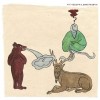 Psychedelic folk stalwart Ben Chasny's newest album speaks volumes through its packaging. Small observations hint at the nature of the music within: tranquil cover art picturing three hand-painted, mystic animal figures; a dedication to the late Dr. Ragtime in the liner notes; and the album's vivid title, Asleep on the Floodplain, referencing a peaceful state of rest and rejuvenation amidst a greater chaos.
Psychedelic folk stalwart Ben Chasny's newest album speaks volumes through its packaging. Small observations hint at the nature of the music within: tranquil cover art picturing three hand-painted, mystic animal figures; a dedication to the late Dr. Ragtime in the liner notes; and the album's vivid title, Asleep on the Floodplain, referencing a peaceful state of rest and rejuvenation amidst a greater chaos.
Asleep on the Floodplain unfolds at a relaxed pace, never hurried. The album finds Chasny rekindling his fondness for the simple beauty of acoustic guitar—or perhaps deepening his love for it. Of ten songs, the majority center on Chasny's deft guitar playing: two were recorded on solo acoustic guitar with no overdubs; two feature acoustic guitar with harmonium overdubs; and five others utilize more varied instrumentation, but feature Chasny's guitar work at their core. Only half of the tracks feature vocals, some of which, such as Elisa Ambrogio's appearance on "River of My Youth," are wordless. The album was home-recorded over the course of three years, lending it an up-close-and-personal feel less emphasized on recent Six Organs efforts.
In short, the album is excellent—and it's a grower, understated at first blush, but revealing the depth of its charms with multiple listens. Whether it ranks with Chasny's best work is a difficult call because I'm hard pressed to find a weak leak in his discography–a favorite Six Organs album isn't a case of Chasny's having an obvious career highlight, but a personal preference for one of his many strong, varied records.
Asleep on the Floodplain is a departure from the scorched-earth doom of Shelter from the Ash, the deep psychedelic explorations of Luminous Night, and the sprawling free-psych of Rangda, Chasny's excellent collaboration with Sir Richard Bishop and Chris Corsano. Its overall mood is pastoral, meditative: Chasny sounds at peace with his muse, in harmony with (or perhaps disconnected from) the world around him. Of his past works, the primarily acoustic For Octavio Paz strikes me as similar, as well as his recent soundtrack work for Joseph Mattson's novel, Empty the Sun. Both of those are gorgeous records, and Asleep on the Floodplain plays similarly, spinning its mellow, Eastern-tinged improvisations and gentle psych-folk into a cohesive listen that is never lacking in inspiration.
My favorite moment—one which the subtle, restrained mood of the first seven tracks sets up masterfully—is "S/word and Leviathan," which breaks tone with the rest of the album, yet serves as its centerpiece and clear highlight. "S/word" begins with a simple, repetitive figure finger-picked on saz, which never lets up over 12 minutes and hundreds of quick repetitions, a buzzing drone rising in the background like a swarm of bees. As the saz playing is layered over itself and snowballs in its momentum, Chasny loops his spectral vocals and, eventually, a blistering psych-guitar burst into the mix. Taken in whole, "S/word and Leviathan" is stunning—the first piece of music I have heard this year that leaves me noticeably short of breath as it unfolds, raising my heart rate, transporting me to a different headspace at its peak. This is Chasny's best long-form composition since "River of Transfiguration," the LP side-length closer to 2005's underrated The Sun Awakens.
Asleep on the Floodplain finds Chasny confident in his playing and in fine form throughout. It is an enveloping listen, my favorite album of 2011 to date and a worthy addition to the Six Organs of Admittance catalog.
Samples:
Read More
- Administrator
- Albums and Singles
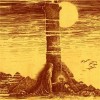 Dawnbringer is Chris Black, a contemporary metal musician who writes and produces all of his own material and performs most of it on record. His fourth full-length album is superb, finding inspiration in traditional heavy metal forms and injecting them with Black's own character and creativity.
Dawnbringer is Chris Black, a contemporary metal musician who writes and produces all of his own material and performs most of it on record. His fourth full-length album is superb, finding inspiration in traditional heavy metal forms and injecting them with Black's own character and creativity.
Dawnbringer's previous albums skew toward black metal, and Nucleus is a departure. The majority of its songs are littered with classic thrash metal and NWOBHM signifiers (think prime-era Iron Maiden, Metallica and Slayer): a welcome influence and starting point. While traditional heavy metal is the album's backbone, there are several songs that take clear-cut inspiration from black metal, including album highlight "The Devil," and there are acoustic, folk-based interludes and breaks scattered throughout the record. Nucleus doesn't sound tied to a particular era—at times it sounds like it could have been released 25 years ago, and at others it sounds undeniably modern.
The enjoyment I find in Nucleus is the way it digests familiar influences—classic thrash and British heavy metal, along with modern black metal—and subsequently turns out nine songs that are well-written, catchy and distinctive. The musicianship is top-notch throughout the album. In particular, the guitar attack stands out: not a minute goes by without a riff, hook or searing solo that captures my attention and enthralls me. The rhythm section provides a solid foundation for the guitars, taut and forceful, but doesn't overpower them. The production sounds crisp, three-dimensional, and unreliant on studio effects, such that Nucleus might as well have been recorded live.
If Nucleus has an Achilles' heel, however slight, I think it's the vocals. Chris Black is an everyman—he holds his ground and is not off-putting, yet doesn't lay down a distinctive performance the way metal's best vocalists can. Granted, this may be to his credit—I get the sense he would prefer the music take center stage. Black's lyrics suit the music well: never written lazily, but sticking with topics familiar to metal, often regarding spiritual beings (devils, ghosts, wizards) or huge, immovable forces (death, dreams, earthquakes, night, the sea).
Most of these songs run together seamlessly on disc, forming suites of tracks that play well in sequence. Fast, intense songs are sequenced alongside others content to rise and fall slowly: for example, the first three tracks play as a single suite, culminating in "The Devil," which then segues into the acoustic-flourished "Cataract" and groovy, slow-burning "Like an Earthquake." This lends Nucleus a strong sense of cohesiveness.
Nucleus sounds like a great rock album should—memorable and hooky at times, intense at others, well-sequenced, and with great songwriting and musicianship throughout. As a fan of classic heavy metal, I've enjoyed hearing Dawnbringer mold influences into a powerful, thrilling album of its own.
Samples:
Read More
- Administrator
- Albums and Singles
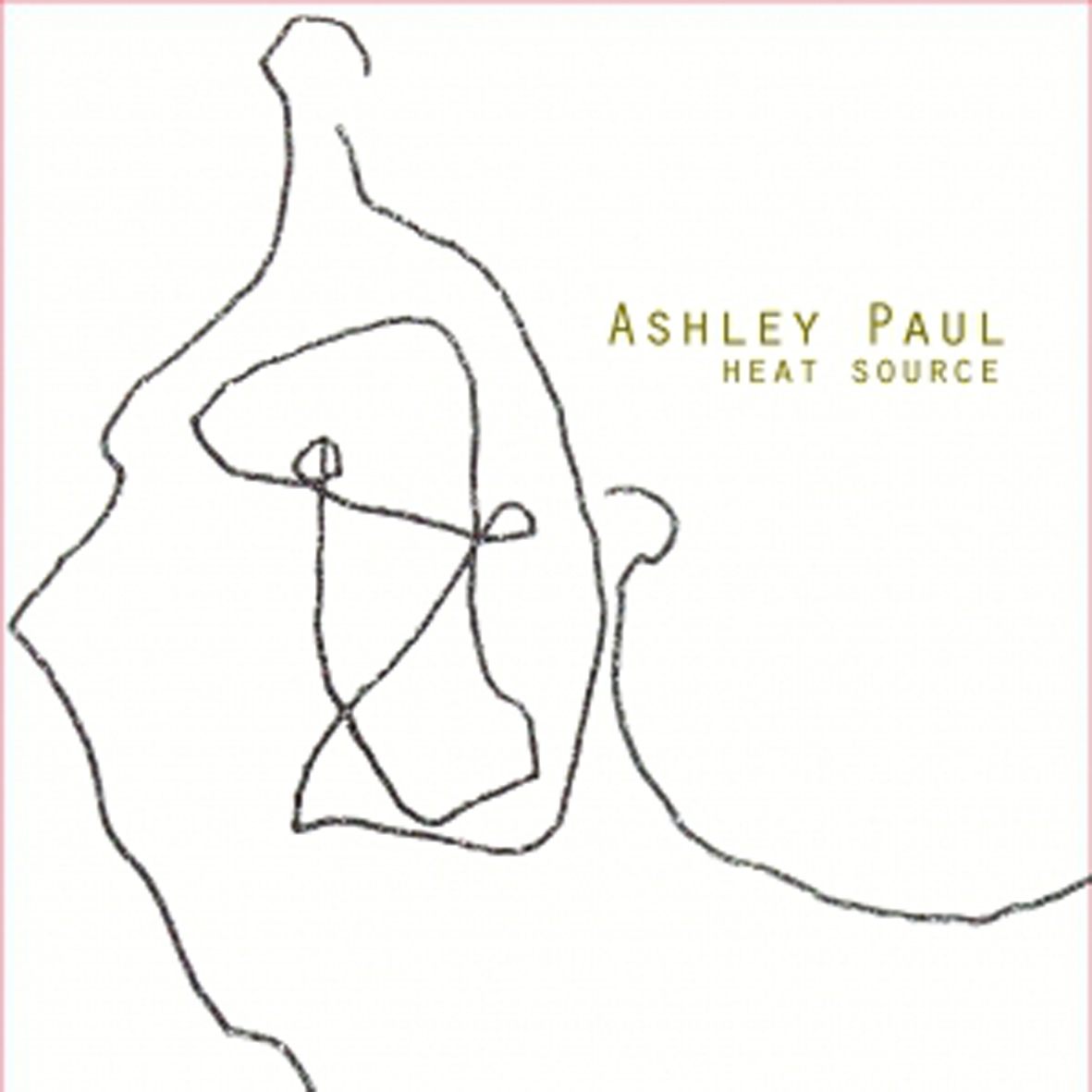
The best description of Ashley Paul's music that I can think of is that it sounds like she heard a Jandek album one day and thought "Yes!  This is exactly what I want to do!  But better, obviously."  I mean that in the best possible sense though, even if it is bizarre to hear a presumably well-adjusted, conservatory-trained Brooklyn composer make something that resembles very creepy, sociopathic, and unsettling outsider art.  Heat Source is a wonderfully broken-sounding, discordant, and challenging effort.
I have absolutely no idea if Ashley has ever had any interest in Jandek's career at all, but it would be very difficult to argue that she has not taken a sophisticated route to wind up in a place very similar to his early primitivism.  This is one unapologetically stark and haunted-sounding album.  The difference between the two artists lies primarily in the rigorousness and vision of Paul's execution, as Heat Source's 10 pieces create the illusion of out-of-tune pointillistic randomness while Ashley remains in complete control (she has a solid background in both jazz and microtonal music).  That multi-layered depth and structure makes a big difference, making Heat Source feel far more like hallucinatory, nightmarish, and fractured adult nursery rhyme than a series of lonely audio suicide notes.  Also, Ashley conveys a much wider range of moods than Sterling Smith, even if they are all quite troubling.
At its core, Heat Source is built upon Paul's guitar work, which alternates between dissonant slow-motion arpeggios of non-chords and skeletal, unadorned single notes (as in "Rain, Away").  Ashley embellishes her fragile plucking with a host of delightfully unsettling other touches though, filling the spaces with odd creaks and scrapes, strangled-sounding saxophone whines, and forlorn clarinet melodies.  Then, of course, there are Ashley's hushed, disquieting vocals, which sound like she is recounting her darkest, innermost thoughts in a sing-song, somnambulant lilt.  The overall effect is quite unnerving, ranging from uncomfortably vulnerable to uncomfortably grotesque ("I want your skin on my ears").  The latter is quite a neat trick, as the lyrics of "Feet on Legs" would be sensual/sexual in almost any other context, but Ashley's delivery is such that they sound far more like the prelude to an especially grisly murder.
If Heat Source has a flaw, it is that it feels like ten variations of the same theme, which I suppose is also a charge that could be leveled against last year's somewhat less dissonant Line the Clouds.  It is admittedly a great theme though, even if it is engineered for maximum discomfort.  Also, I suppose that this is kind of a difficult album to love, given how prickly and alienating it is by design, but that is because it is great art rather than great entertainment.  That distinction is important.  Ashley has done something rather brilliant here, striking the perfect balance between compositional artifice and fearless, deeply personal catharsis.  Heat Source is easily one of the year’s most memorable and unique albums.
 
Read More
- Administrator
- Albums and Singles
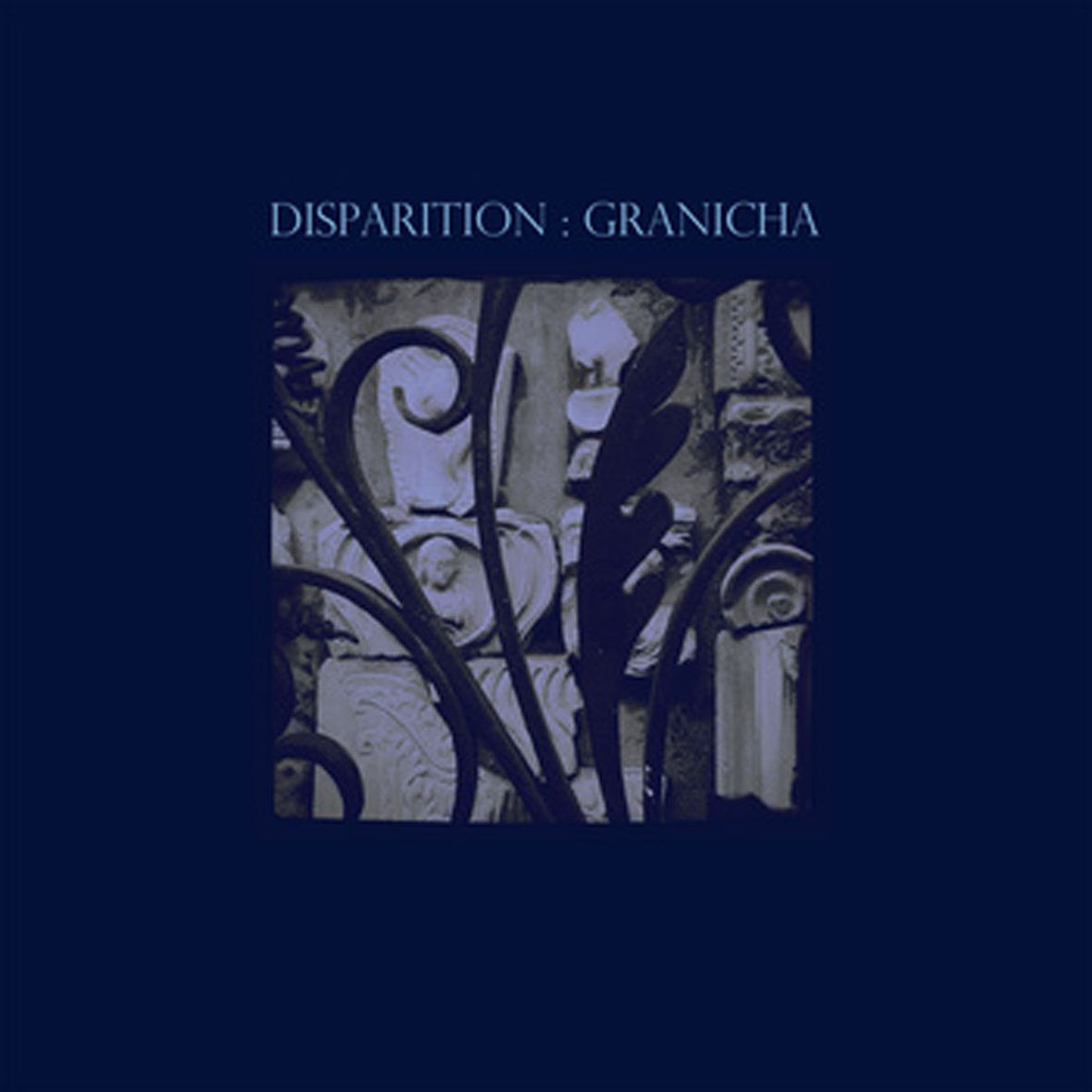
Disparition is the solo project of Brooklyn composer Jon Bernstein, who is best known as the man behind the music for Welcome to Night Vale.  Most of his previous non-Night Vale work has been in the ambient/ambient-techno veins, but this latest release is a wildly ambitious departure, enlisting a large cast of disparate collaborators for a stylistically eclectic This Mortal Coil-style tour de force.  Clocking in at almost 2 hours, Granicha can be a bit of an overwhelming and disorienting listen, but it somehow still manages to err on the side of far too many good ideas rather than too few.
Granicha is a very difficult effort to wrap my head around for a whole host of reasons, which I suppose means that Bernstein is doing something very right: this album certainly does not suffer from lack of ambition, an unwillingness to take chances, or a rigid adherence to convention.  Sometimes conventions are in place for fairly good reasons, however, which is where Granicha occasionally enters some head-scratching territory.  For example, the lead-off "Hexe" is a very hooky, propulsive piece that is roughly in the Massive Attack vein, boasting wonderfully soulful, sensuous vocals by Valerie Evering and some very cool dub-influenced percussion.  All of the necessary components for a great single are in place and they are executed beautifully.  Bernstein had other ideas, however, as the piece dissolves midway into a clattering percussion interlude, then a brief unaccompanied violin motif, then returns to full power in darker, more psychedelic form before ultimately winding down around the 9-minute mark.  The transitions themselves are seamless and enjoyably unanticipated, but it is a little bewildering (and little cool) to see someone so intent on sabotaging their own perfectly crafted pop song.
That conflict between Jon's talent for hooks and tight songcraft and his love of epic, byzantine, proggy multi-part song structures is a curious running theme throughout Granicha.  Usually, however, it works in the reverse direction:  they are plenty of non-hooky, seemingly indulgent pieces strewn throughout the album that are unexpectedly saved by a beautiful transition into a strong melody or groove.  On a related note, I truly cannot stress how stylistically varied Granicha is, sometimes even within the same song.  The high-water water for that eclecticism is the unquestionably the 13-minute "Doggerland," which somehow manages to encompass heavy Tangerine Dream-style space music, operatic Siren-esque vocals from Marnie Breckenridge, a very cool percussion interlude, a quasi-gospel crescendo, and some kind of Flamenco/Middle Eastern guitar coda all within the same song.
Most of the fun of Granicha (for me, anyway) lies in witnessing Jon's compositional gymnastics, as it seems like he is always in danger of digging himself into a hole or hopelessly flogging an unpromising motif, only to imaginatively twist the piece into something that I genuinely like.  The downside to that, of course, is that there are quite of few stretches of Granicha that drag a bit for me (it is a nearly two hour album) even if nearly every individual piece boasts at least one passage of remarkable inspiration.  Also, I would be remiss if I did not mention the craftsmanship.  Specifically, I loved Tim Monaghan's many shifting percussion flourishes throughout the album, but in a more general sense Granicha is a production tour de force: this album is a massive, complexly structured, genre-hopping, multi-layered monster featuring everything from rappers to operatic sopranos, yet somehow it all holds together and sounds consistently assured, crisp, and vibrant.  I cannot begin to fathom how many hours this album took to assemble once the recording was complete.
Finally, Granicha contains at least two songs that I would describe as legitimate, left-field successes that sound like nothing else I have heard: "A Fire in the Distant Hills" and "Book of Arrows," both of which feature obsessively repeating quasi-poetry from vocalist Oswald Starr over a constantly shifting groove.  "Book of Arrows" is especially impressive, as Bernstein ingeniously threads Starr's vocals together with those of Henny Hendrix and Deepthi Welaratna.  The cautiously curious would probably be best served by investigating those two pieces or "Hexe," but Granicha is ultimately a fascinating complete album in a crazy-quilt, overstuffed, anything-can-happen kind of way.  While part of me certainly wishes that Bernstein had pared things down a bit or focused on a single direction, I am probably still much happier with an unpredictable and sometimes unwieldy gamble that forcibly creates its own bizarre niche.
 
Read More
- Administrator
- Albums and Singles
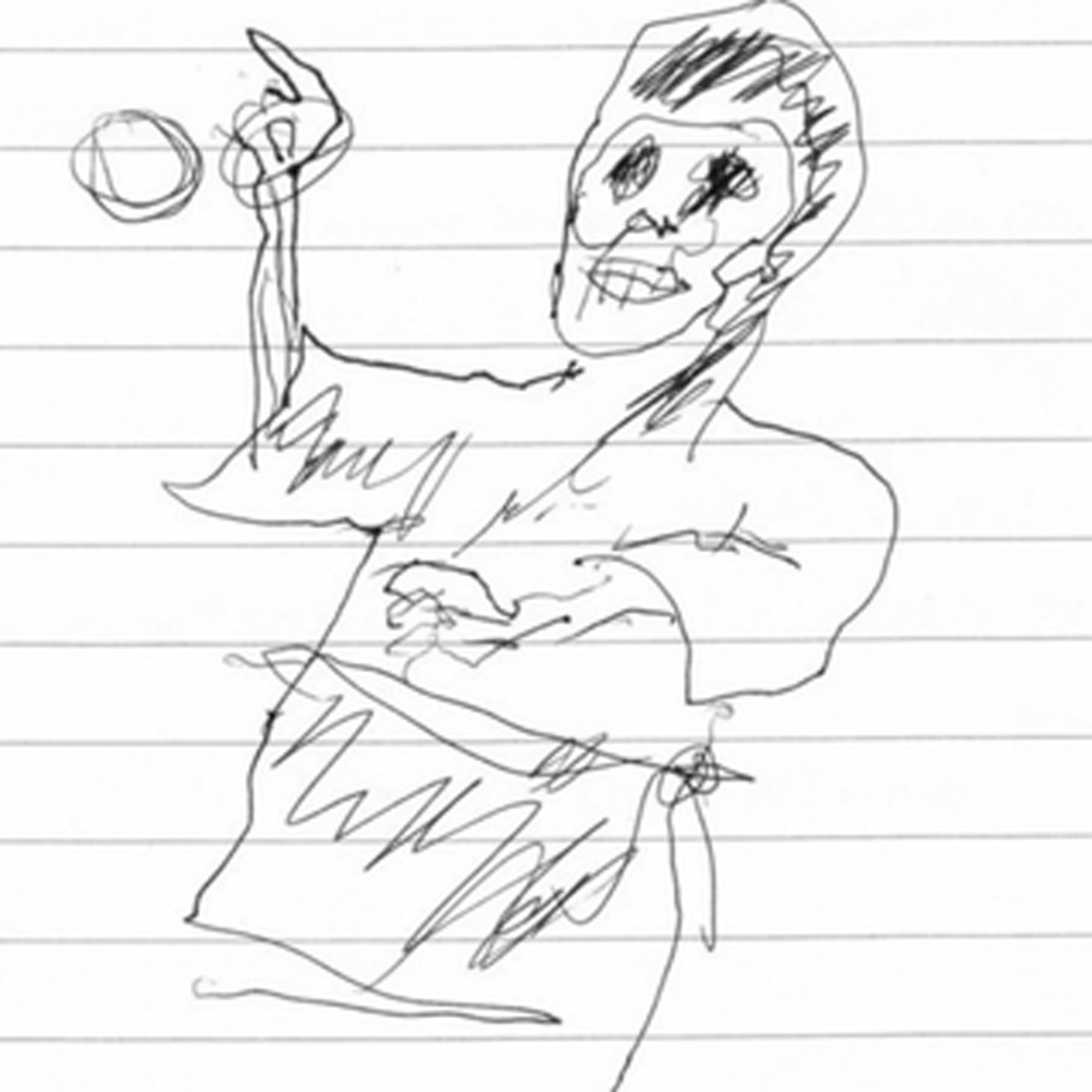 Drumm’s latest is quite an unusual and expectation-subverting one, given that his previous releases for the label have largely been genre-defining noise masterpieces. Trouble is definitely not that, nor does it bear much in common with any of Kevin's other major efforts.  Billed as "54-minute excursion into the netherworld of the audio spectrum," the piece is an extremely quiet and amorphous experiment in queasily dissonant harmonies that teeters dangerously close to being complete silence.
Drumm’s latest is quite an unusual and expectation-subverting one, given that his previous releases for the label have largely been genre-defining noise masterpieces. Trouble is definitely not that, nor does it bear much in common with any of Kevin's other major efforts.  Billed as "54-minute excursion into the netherworld of the audio spectrum," the piece is an extremely quiet and amorphous experiment in queasily dissonant harmonies that teeters dangerously close to being complete silence.
As a Kevin Drumm fan, I am deeply conflicted and exasperated by this album.  On the one hand, I am delighted that he has managed to avoid repeating himself and that he continues to push himself into new realms of experimentalism.  Whatever it is, Trouble is definitely not something that can be reasonably categorized as drone, ambient, or noise.  Nor could it be described as unambitious, as Kevin weaves a nuanced web of eerie, uneasily overlapping swells and hums for almost an hour.  Unfortunately, it all adds up to a bit of a frustrating listening experience for some very fundamental reasons.
For one, Trouble is an extremely quiet album that amounts to little more than faintly disquieting background noise unless it is played at a crazily high volume.  I realize that this was a deliberate artistic choice, but that does not make it less frustrating.  Secondly, Trouble does not feel like an actual composition.  Rather, it is just something that happens for an hour, then stops happening.  It could have just as easily gone on for ten minutes or six hours instead.  Without any kind of progression or arc, there is no real reward for attentive, prolonged listening–just a lot more of the same. It is like Kevin sonically snuck into my apartment to paint all of my white walls an extremely subtle shade of off-white that I would never notice unless I knew he had done it: plenty of effort for no discernible reason.
Of course, it is possible (and desirable) to use volume-leveling software to make Trouble a far more engaging and audible experience, but that is not the album Kevin intended: he clearly wanted to make nearly imperceptible sonic wallpaper, something aggressively contrarian, or some kind of dark successor to Cage's "4'33"".  Whatever the purpose, it certainly seems like an extremely quixotic endeavor to me.  I am completely mystified as to why this ended up as a formal Editions Mego release rather than just a self-released Bandcamp or CDR experiment.  Trouble is strictly for serious Drumm fans only, as it is only interesting because it was made by Kevin Drumm.
- Excerpt One (volume enhanced)
- Excerpt Two (volume enhanced)
- Excerpt Three (original volume)
 
Read More
- Administrator
- Albums and Singles
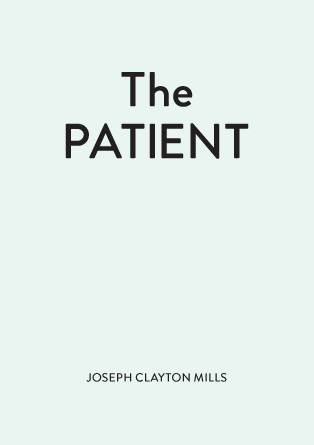 Franz Kafka died of starvation on June 3rd, 1924, his throat cinched by laryngeal tuberculosis. The intravenous delivery of food to sick patients wouldn’t be invented for another 35 years and the swelling in Kafka’s throat caused by the infection made swallowing even water difficult. Forbidden from speaking by his doctor at the sanatorium in Kierling, Austria, Kafka would often communicate with his friends and visitors by writing small notes on scraps of paper. Some such scraps were less notes and more fragments or disconnected ideas, phrases impossible to understand without context. It’s something Max Brod, Kafka’s friend and literary executor, recalls in the opening pages of the booklet that accompanies Joseph Clayton Mills’s The Patient. "Usually these notes were mere hints; his friends guessed the rest," he writes. Mills, accompanied by Olivia Block, Noé Cuéllar (Coppice), Steven Hess (Pan•American, Haptic, Innode), and Jason Stein take a shot at interpreting those fragments on this record, using Mills’s textual score to trace a line around Kafka’s final abraded thoughts.
Franz Kafka died of starvation on June 3rd, 1924, his throat cinched by laryngeal tuberculosis. The intravenous delivery of food to sick patients wouldn’t be invented for another 35 years and the swelling in Kafka’s throat caused by the infection made swallowing even water difficult. Forbidden from speaking by his doctor at the sanatorium in Kierling, Austria, Kafka would often communicate with his friends and visitors by writing small notes on scraps of paper. Some such scraps were less notes and more fragments or disconnected ideas, phrases impossible to understand without context. It’s something Max Brod, Kafka’s friend and literary executor, recalls in the opening pages of the booklet that accompanies Joseph Clayton Mills’s The Patient. "Usually these notes were mere hints; his friends guessed the rest," he writes. Mills, accompanied by Olivia Block, Noé Cuéllar (Coppice), Steven Hess (Pan•American, Haptic, Innode), and Jason Stein take a shot at interpreting those fragments on this record, using Mills’s textual score to trace a line around Kafka’s final abraded thoughts.
"The goal of this document is to suggest a vocabulary of actions," Mills writes. "It should in no way be seen as prescriptive or comprehensive, and the sequence of elements in this document should not be construed as implying a particular linear arrangement."
The 52-page score for The Patient bears only a passing resemblance to traditional musical scores. It contains a couple of references to particular notes in the Western 12-tone system, a few bar lines (one set displays both a treble and bass clef, but is otherwise blank), a few more very precise frequencies for sine wave generator, and even a reference to Wagner’s "Tristan chord," but the majority of it is filled with suggested actions of the sort written by George Brecht, La Monte Young, and Pauline Oliveros. They read, "play for longer than you think you should" and "image of water/droplets/dew" and "hushed breath/for unvoiced bellows/vocalist/friction on drumhead."
Together they are enough to constitute a composition, only the number of performers is unspecified and there are no instructions for how to string individual performances together. Participants have only Kafka’s quotes and Mills’s accompanying directions to guide them, along with a handful of photographs, drawings, medical diagrams, story excerpts, and historical summaries. None of it is prescriptive, but all of it sets a very particular tone, which is why, despite the score’s innate openness, this performance of The Patient sounds so compact, controlled, and potent. The instruments and sounds used to build it—piano, walkie-talkies, an accordion, bass clarinet, and even pages torn from a psalter—reflect Kafka’s illness brilliantly. They are harsh at times, and dry; distorted and lethargic; then atmospheric and feathered with granular noise. When they appear, words and phrases rise almost to intelligibility, then stop abruptly. They are threaded with interference, whispered breathlessly, and cut off as if by pain.
Still, every component is clearly expressed, even when it's truncated or mangled. Most passages are uncluttered and there are long spells of silence or near silence scattered throughout each of the piece’s seven mostly instrumental parts, but that only emphasizes the anguish in the sounds. It’s as if the audible distress of Kafka’s tuberculosis, latent in the notes he wrote, has been brought back to life. The wheezes, spasms, and sudden shocks of panic aren't just musical expressions, they're echoes of his condition that have traveled quietly through time for nearly 90 years.
But does it have to be so? Could The Patient ever be just an index for future performers, and so escape the gravity of Kafka’s life? What Mills put on the CD is a combination of improvised sounds inspired by his own text and a conscious arrangement of those sounds assembled after the fact. In this case, it’s almost impossible not to think of Kafka and A Hunger Artist or Before the Law because the text and the music is so filled with Kafka's voice, no matter how scattered and disembodied. Maybe we access Kafka’s private world by a secret musical door he never suspected, but that this world is put together from fragments and disconnected ideas constantly nags the mind. Whatever narrative can be spied in those scraps of paper, they’re a product of reflection, not the scraps themselves. The score sets a tone, but that tone could slip away like a breath if the performers wanted it to.
This particular performance pays homage to the score’s inspiration, but another might focus on the peonies, birds, or durations mentioned by Kafka in his notes. Yet another might obscure Kafka almost entirely and present a series of bodiless inflictions instead. That Kafka could disappear behind his own text is fitting. "Order and accidents seem equally impossible," he wrote. The Patient renders that paradox beautifully and asks its participants, whether listener or performer, to decide whether order or accident prevails.
samples:
 
Read More



